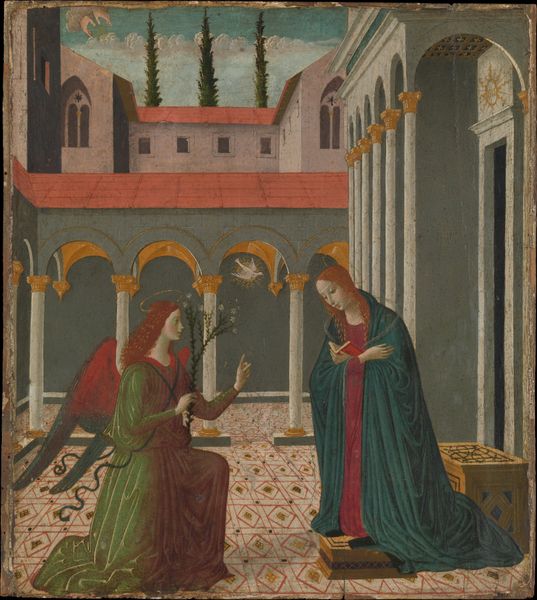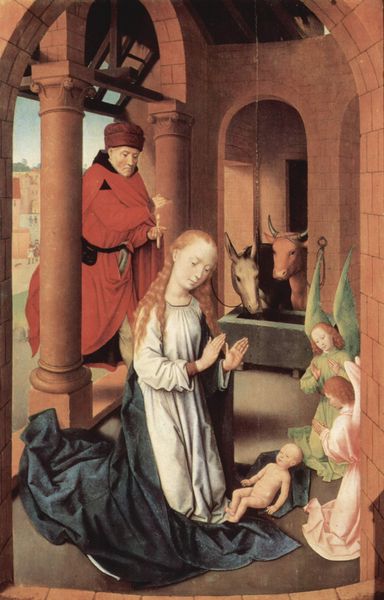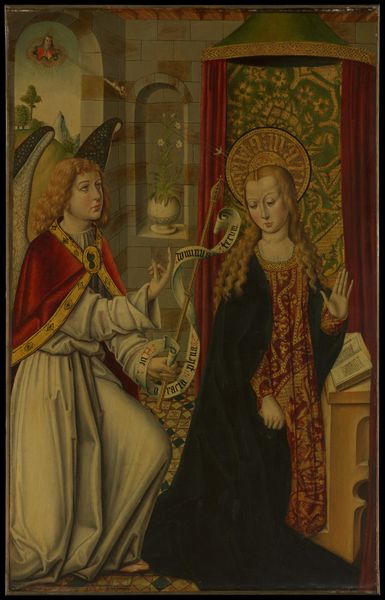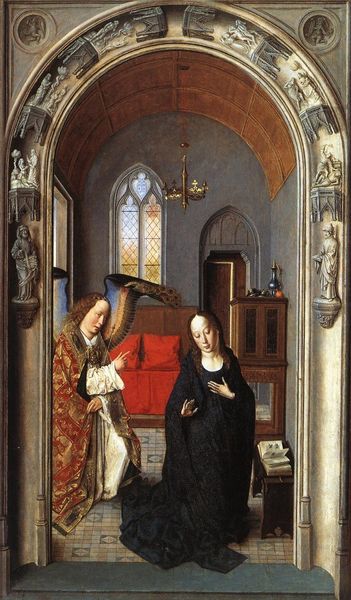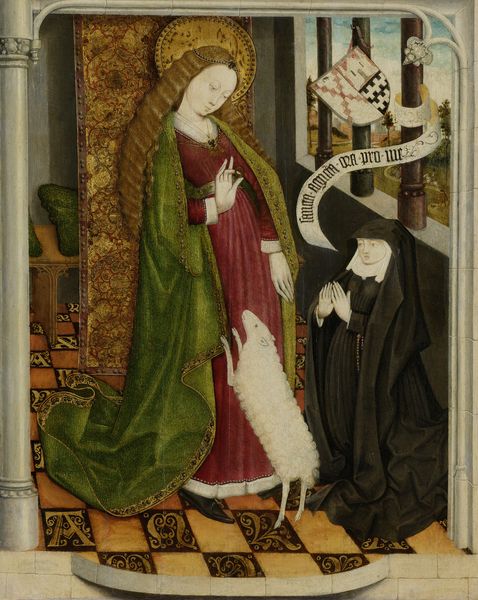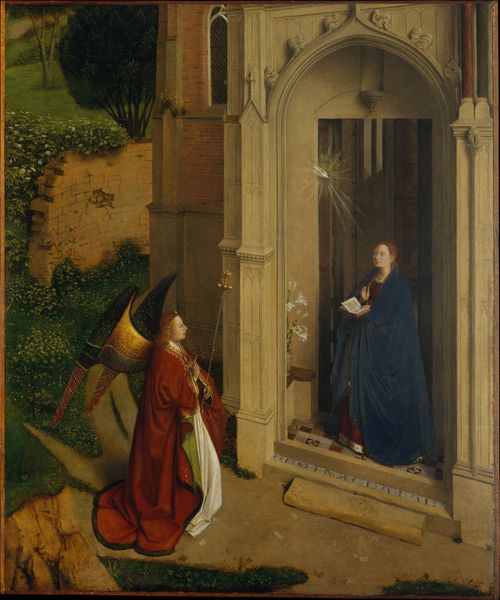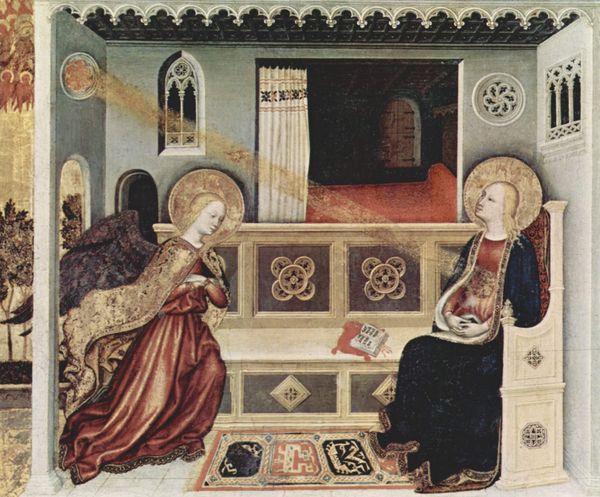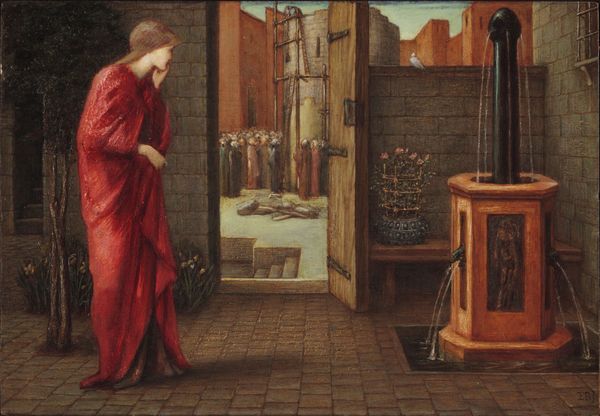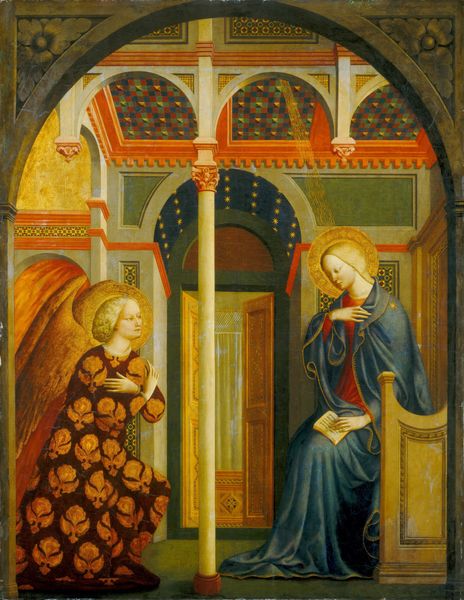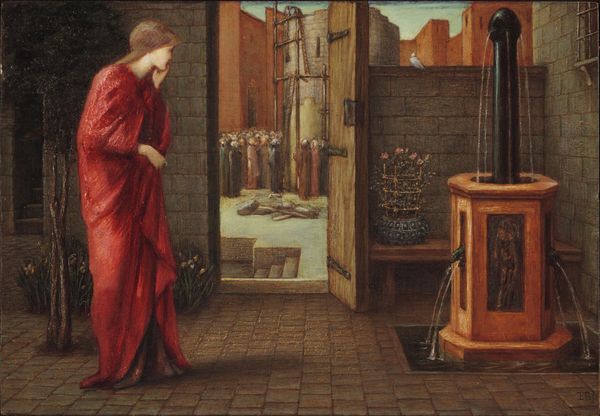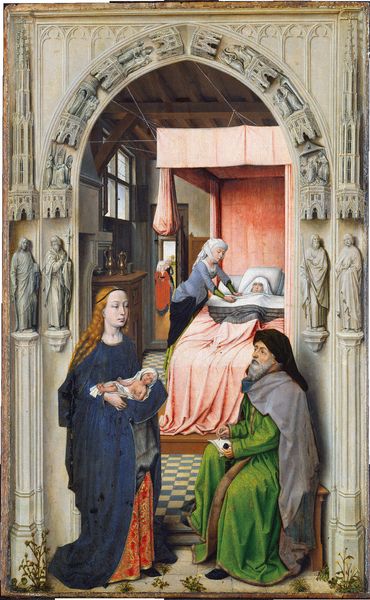
painting, oil-paint
#
painting
#
oil-paint
#
figuration
#
oil painting
#
underpainting
#
italian-renaissance
#
early-renaissance
Copyright: Public domain
Curator: Let's delve into this segment of Gentile Bellini's "Annunciation," crafted around 1465 and housed in the Thyssen-Bornemisza Museum. It’s an oil painting that encapsulates a key scene in Christian iconography. What springs to mind as you observe this segment? Editor: The somber, almost hushed atmosphere really grabs me. The space feels incredibly formal with those imposing columns, yet Mary’s posture—her bowed head, clasped hands—evokes a very personal, vulnerable moment. There’s a strange mix of the sacred and the deeply human. Curator: Precisely. The architecture certainly speaks to Bellini's Venetian context. These classical elements are reimagined in the Renaissance style, symbolizing order and divine purpose, integral to the narrative's authority during this era. What seems unorthodox is how much space she occupies. We are confronted with not just the spiritual impact of the annunciation but an intimate depiction of the moment itself. Editor: You're right. Look at how the cool palette reinforces that sense of quiet contemplation, that contrast between the greens and deep reds, which pulls the eye into her very physical, yet serene presence, in what feels like such a huge empty space. It is like the divine interrupting the real, everyday human moment. What a striking visual paradox. Curator: And her positioning within the architectural space becomes symbolic. It is the stage upon which divinity will intersect with humanity. Bellini masterfully employs linear perspective here, drawing viewers into her world and inviting them to contemplate the impending spiritual shift. Editor: Which makes me think about how women's lives were perceived then. The artwork isn’t just about a theological event; it reflects on the limited roles assigned to women. This solitary figure in her domestic space takes on extraordinary historical and political weight—her quiet “yes” echoing through the ages. Curator: That’s a really important perspective. Bellini's "Annunciation" goes beyond illustrating a biblical event. It portrays an intersection of faith, power dynamics, and personal destiny within a specific historical frame. Editor: A blend of visual serenity with deeper thematic threads, isn't it? It gets one pondering what stories are quietly concealed beneath those Renaissance details and pious poses.
Comments
No comments
Be the first to comment and join the conversation on the ultimate creative platform.
